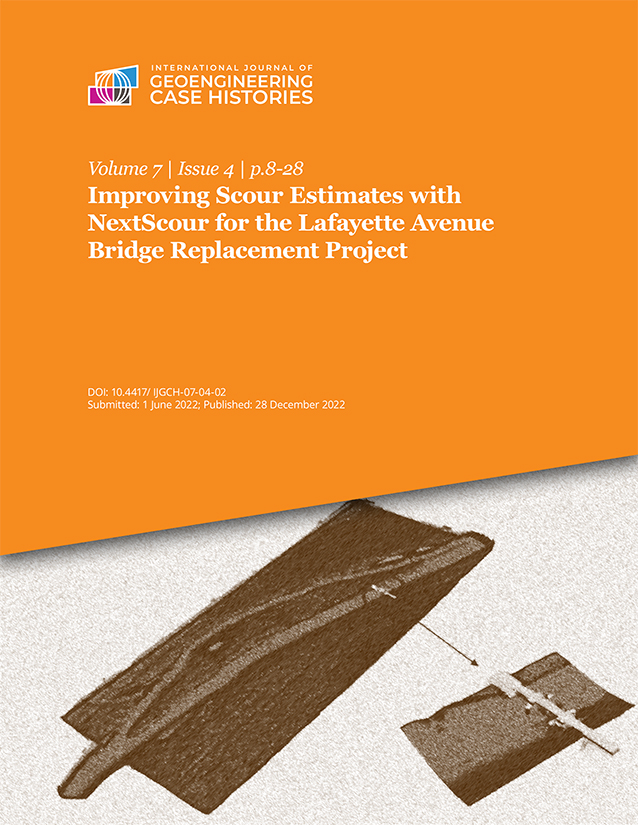Improving Scour Estimates with NextScour for the Lafayette Avenue Bridge Replacement Project

Volume 7 – Issue 4
Authors: Haoyin Shan ; James Pagenkopf ; Chen Li ; Nasi Zhang ; Daniel Pastrich ; Otto Wiblishauser ; Chao Huang ; Kornel Kerenyi
Keywords
NextScour, clay, erosion resistance, critical shear stress, erosion testing, decay function
Abstract
The Michigan Department of Transportation (MDOT) is investigating replacingthe existing Lafayette Avenue Bridge in Bay City, MI.The geotechnical site investigation classified a layer of medium-to-hard clay at depths of 4.6 to 6.1 m (15–20 ft) below the channel that potentially and significantly reduces scour and makes the foundation design more economical. Conventional design methods predict scour depths that would penetrate the clay layer by several feet. MDOT reached out to the Federal Highway Administration (FHWA) through the Transportation Pooled Fund Program for help in applying the latest advancements in scour research for this project. FHWA suggested using the NextScour method to conduct the scour analysis. NextScour recognizes that the phenomenon of scour consists of two major aspects or components: consideration of water and hydraulic forces (loads), and the erosion resistance of soils and their associated geotechnical effects (resistance). NextScour institutes a new direction; it refocuses and aligns those geotechnical and hydraulic components within a true multidisciplinary framework, with outcomes that provide more certainty and reduced project costs. This paper summarizes how the NextScour approach helps improve the design scour determination for the Lafayette Avenue Bridge replacement project.




